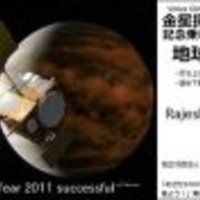Research Interests: Landscape Ecology, Urban Geography, Disaster risk management, Urban Planning, Foresight, and 25 moreEcohydrology, Vulnerability, Archetypes, Futures Studies, Biodiversity, Scenario planning, Indigenous Peoples, Land-use planning, Land Use Change, Urban Growth, global Climate change, Nature Conservation, Landscape change, Scenarios, Cla, Scenario Building, Remote Sensing and GIS applications in Forestry, Land Use/ Land Cover Dynamics and LULc Modeling, Alternative Futures, Causal Layered Analysis, Environmental Systems Analysis, Manoa, Geographic Information Systems (GIS), Ecosystem Functions and Services, and Land-use/ Land-cover Change
Research Interests: Botany, Landscape Ecology, Conservation Biology, Disaster risk management, Biology, and 25 moreEcology, Vegetation Ecology, Vulnerability, Biodiversity, Forest Ecology, Indigenous Peoples, Land-use planning, Biodiversity Research, global Climate change, REDD+, Land use and land cover change modeling, R/S AND GIS IN MAPPING LAND USE LAND COVER CHANGES AROUND LAKES /WATER BODIES, Landscape change, Sumatra, Landscape and Land-use-history, Landslide hazard and risk assessment, ALOS/PALSAR, Alpine and Arctic Research, Remote Sensing and GIS applications in Forestry, Land Use/ Land Cover Dynamics and LULc Modeling, Weights of evidence Modelling, Logistic Regression Model, Siwaliks, Eastern Nepal, and Land-use/ Land-cover Change
Research Interests: Botany, Landscape Ecology, Environmental Education, Science Communication, Conservation Biology, and 16 moreBiology, Ecology, Ecohydrology, Vegetation Ecology, Biodiversity, Forest Ecology, Human-wildlife conflicts, Remote sensing and GIS applications in Landscape Research, Land Use Change, Biodiversity Research, Nature Conservation, Landscape and Land-use-history, Alpine and Arctic Research, Environmental Systems Analysis, Geographic Information Systems (GIS), and Ecosystem Functions and Services
Research Interests:
This chapter examines the spatiotemporal pattern of urbanization in Kathmandu Valley using remote sensing and spatial metrics techniques. The study is based on time series data compiled from satellite images acquired in the last four... more
This chapter examines the spatiotemporal pattern of urbanization in Kathmandu Valley using remote sensing and spatial metrics techniques. The study is based on time series data compiled from satellite images acquired in the last four decades. A five-step hybrid technique is presented to create land use and land cover maps from remote sensing imagery. Urban built-up areas had a slow trend of growth in the 1960s and 1970s but have grown rapidly since the 1980s. The metrics of the urbanization process has confirmed that the landscape in the valley consists of fragmented and heterogeneous land use combinations. However, the refill type of development process in the city core and immediate fringe areas has shown a decreasing trend in the neighborhood distances between land use patches, and an increasing trend towards physical connectedness, which indicates a higher probability of homogenous landscape development in the upcoming decades.
Research Interests: Botany, Landscape Ecology, Urban Geography, Remote Sensing, Spatial Analysis, and 23 moreConservation Biology, Urban Planning, Computer Aided Design, Biology, Environmental modeling, Housing, Ecology, Transportation, Environmental Monitoring, Vegetation Ecology, Biodiversity, Forest Ecology, Biodiversity Research, Urban Design, Environmental Criminology, Landscape Planning, Digital mapping, Landscape and Land-use-history, Alpine and Arctic Research, Remote Sensing and GIS applications in Forestry, Land Use/ Land Cover Dynamics and LULc Modeling, Geodesy and Global Positioning System (GPS) and Their Applications In Earth Sciences, and Geographic Information Systems (GIS)
This chapter presents an integrated technique of AHP and GIS to evaluate the land for peri-urban agriculture. Hanoi province, Vietnam was selected for the case study. Transformation of conventional agriculture to modern cash crops is the... more
This chapter presents an integrated technique of AHP and GIS to evaluate the land for peri-urban agriculture. Hanoi province, Vietnam was selected for the case study. Transformation of conventional agriculture to modern cash crops is the current trend in peri-urban Hanoi. A field survey with focused group discussions was conducted. Based on field survey data analysis, soil, land use, water resources, road network and market were chosen as major factors affecting the peri-urban agriculture. A map of each factor with different logical criteria was prepared. The Analytical Hierarchical Process (AHP) method was applied to identify the priority weight of each factor. Five spatial layers with their corresponding weights were linearly combined to prepare the suitability map. The map was further scaled as High suitable, Medium suitable, Low suitable and Unsuitable land for the peri-urban agriculture. This empirical scenario provides a cost effective and rapid land evaluation framework which may help policy makers, urban and regional planners and researchers working in developing countries.
Research Interests:
In a narrow sense, spatial analysis has been described as a method for analyzing spatial data, while in a broad sense it includes revealing and clarifying processes, structures, etc., of spatial phenomena that occur on the Earth’s... more
In a narrow sense, spatial analysis has been described as a method for analyzing spatial data, while in a broad sense it includes revealing and clarifying processes, structures, etc., of spatial phenomena that occur on the Earth’s surface. Ultimately, it is designed to support spatial decision-making, and to serve as a tool for assisting with regional planning and the formulation of government policies, among other things. The world of GIS includes such terms as spatial data manipulation, spatial data analysis, spatial statistical analysis, and spatial modeling. While there are admittedly slight differences in the definitions of these terms (O’Sullivan & Unwin, 2003), they are subsumed in this chapter, which will examine spatial analysis in a broad sense.
